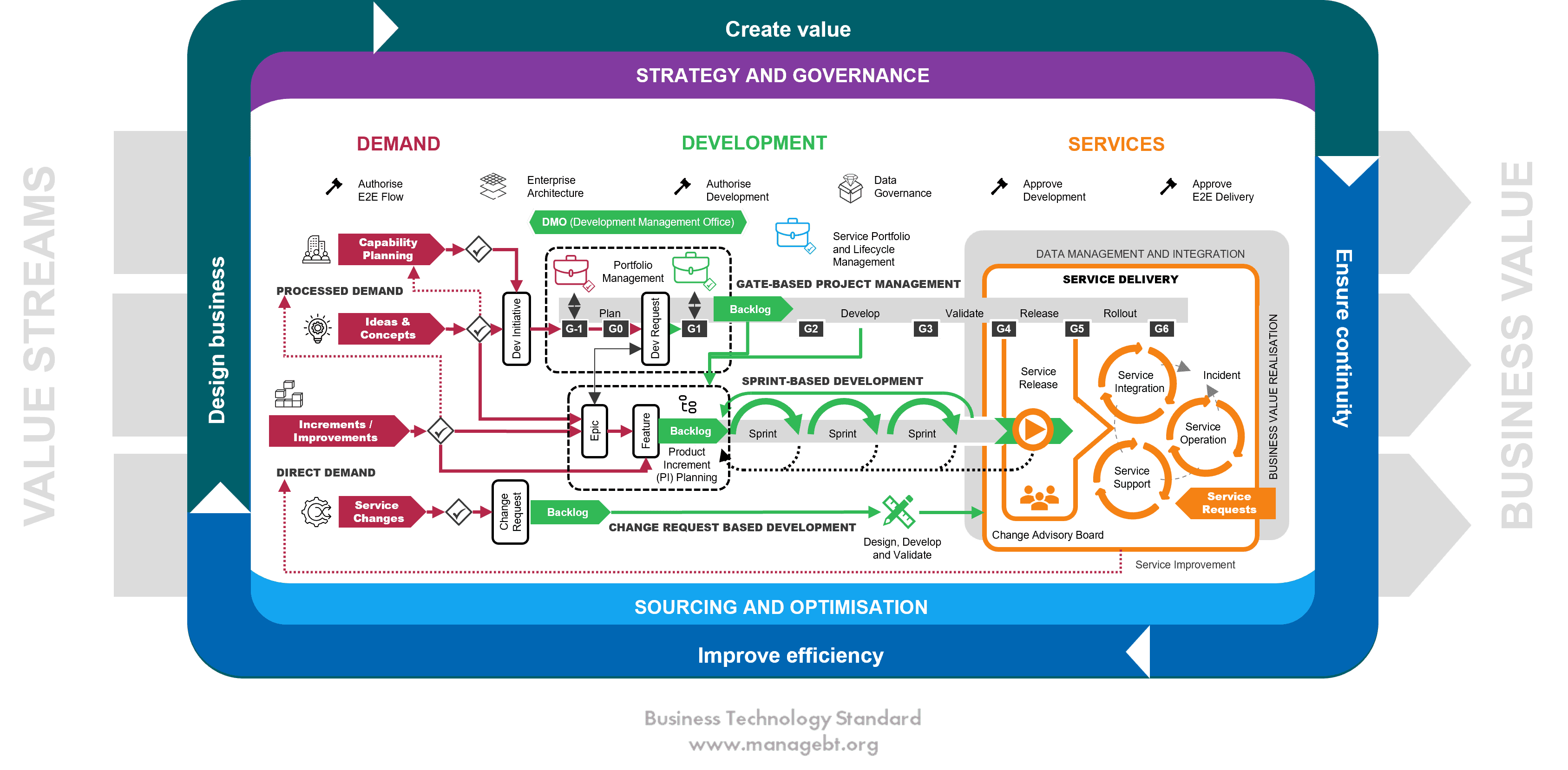The demand discipline intersects between four other disciplines (strategy and governance, sourcing and optimisation, development and services) and its main objective is to turn business intention into concrete business technology actions. The execution is mainly accomplished by managing two flows: strategy-to-plans and demand-to-request.
Strategy-to-plans flow complements the business strategy by adding essential aspects of business technology such as:
Demand-to-request flow captures the business needs and turns them into a prototype or a concept if needed. It analyses business feasibility and prepares a development request to be prioritised and approved for development. The actual flow is dependent on the type of the demand:
Figure 2.0.1 Four souces of demand
The demand that is derived from one of the four sources is transformed into development requests and is evolved via different development paths as illustrated in the picture below.
Figure 2.0.2 Demand-to-commitment governance
Capability planning is an enterprise architecture planning practice. It is best suited for planning major business capability development and transformation programmes that require portfolio steering decisions. Capability planning is by its nature a time-consuming activity.
Ideas and concepts form a fast-moving flow from idea to concept which ideally takes just a few weeks. The concrete outcome usually consists of prototypes and other ideas. Concepts can be moved into the development directly or after some capability planning or enhancements for existing solutions.
Increments and improvements are composed of enhancements for existing products, solutions or services. This type of demand is easier to define than the two mentioned above. Increments and improvements can be moved on to the development via portfolio steering or directly.
The service change flow is the most straightforward flow of the four sources of demand. There are three change variations: standard, normal and emergency changes. Service change is a pragmatic way to make smaller additions, modifications or deletions to existing services.
Data analytics and integrations are also included into the demand discipline as they directly respond to requirements for better use of information. In most organisations, data analytics and integrations are used as a service for the business and therefore they are composed of a mixture of demand and service.
Figure 2.0.3 Demand management
